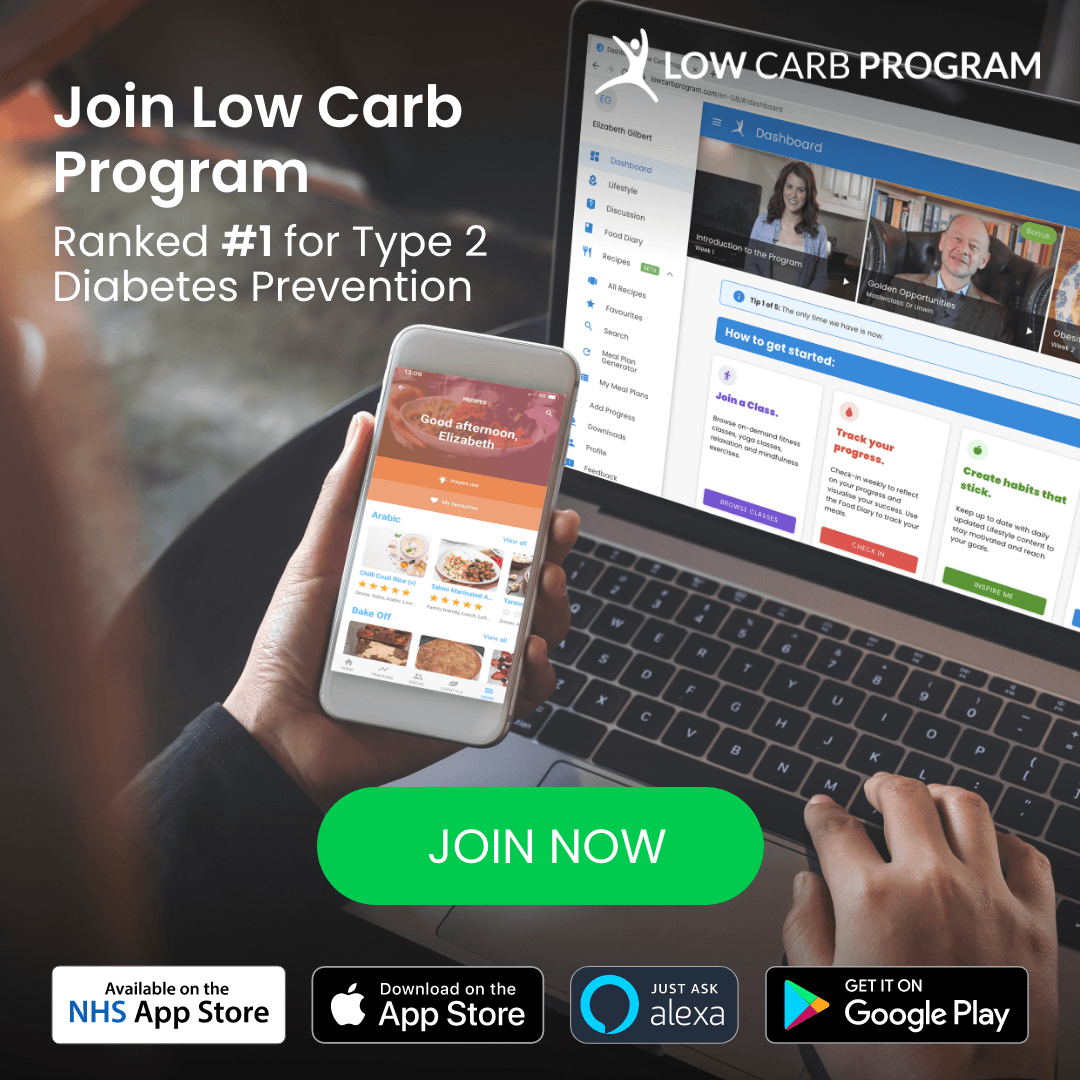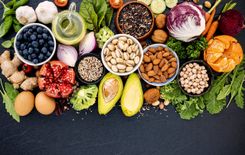What is the low carb diet?
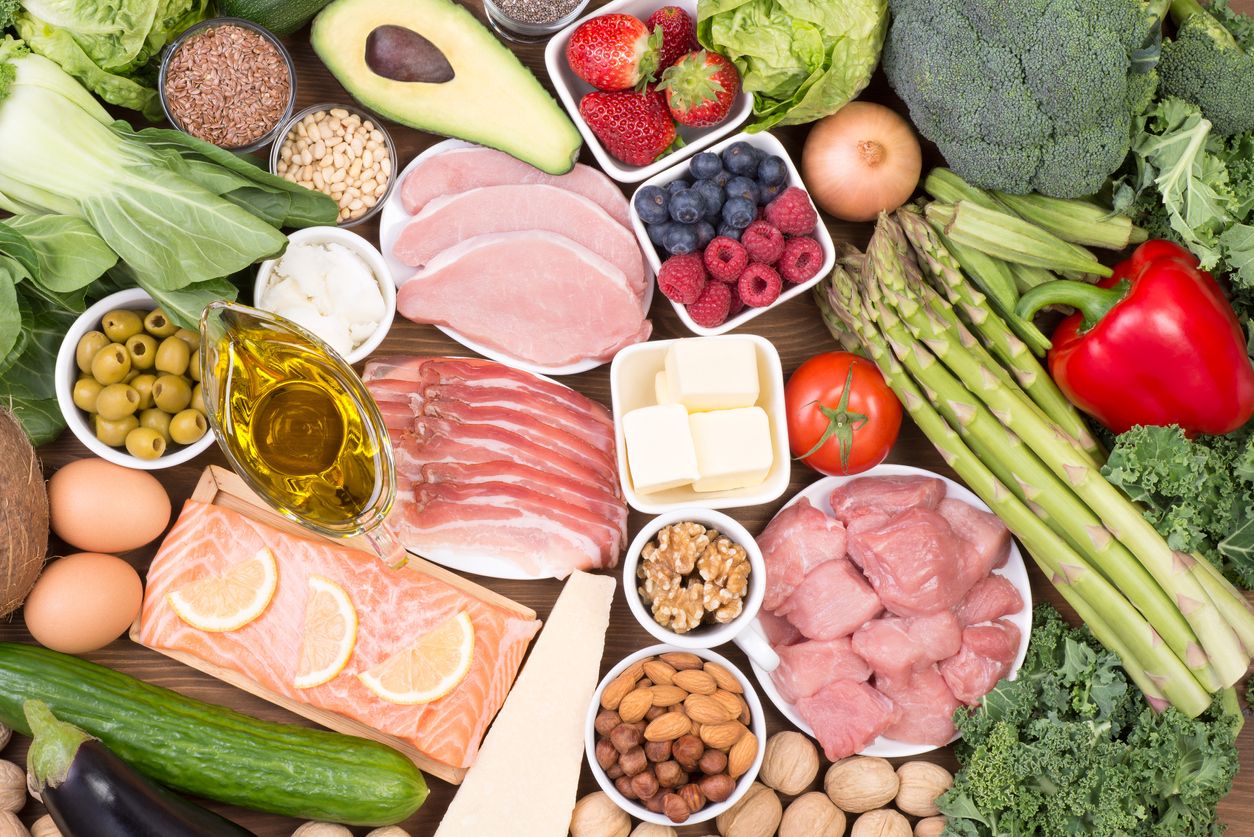
The low-carb diet has been shown to improve many markers of health, especially for those with type 2 diabetes, but what actually is this diet? Keep reading to find out!
Defining low-carb
There is still no official definition of a low-carb diet, but this is generally considered to be a diet limiting carbohydrates to 50-130g per day. Hence, the nature of this approach is to reduce one's carbohydrate intake and replace this energy with good quality sources of protein (meat, fish, tofu, eggs) and healthy fats (olive oil, avocado, nuts, dairy). Moreover, we firmly believe in a whole-food approach, with a limited presence of highly processed foods as these often are high in fat, sugar and salt with little nutritional value. This means trying to include plenty of non-starchy vegetables, fruits, nuts, seeds, dairy, lean meat, fish and small portions of wholegrains, as opposed to basing our diets on takeaways, ready meals, pastries and cakes.
Something that is important to notice, is that this is a low-carb approach, not a no-carb approach! Going below 50g of carbohydrates per day is typically referred to as a ketogenic or 'keto' diet. This can offer similar health benefits, but can also be slightly trickier to balance and sustain, so may only be followed in the short-term. In addition, everyone will have a different carbohydrate tolerance, and so the exact amount of carbohydrates right for one person, may differ to that for another.
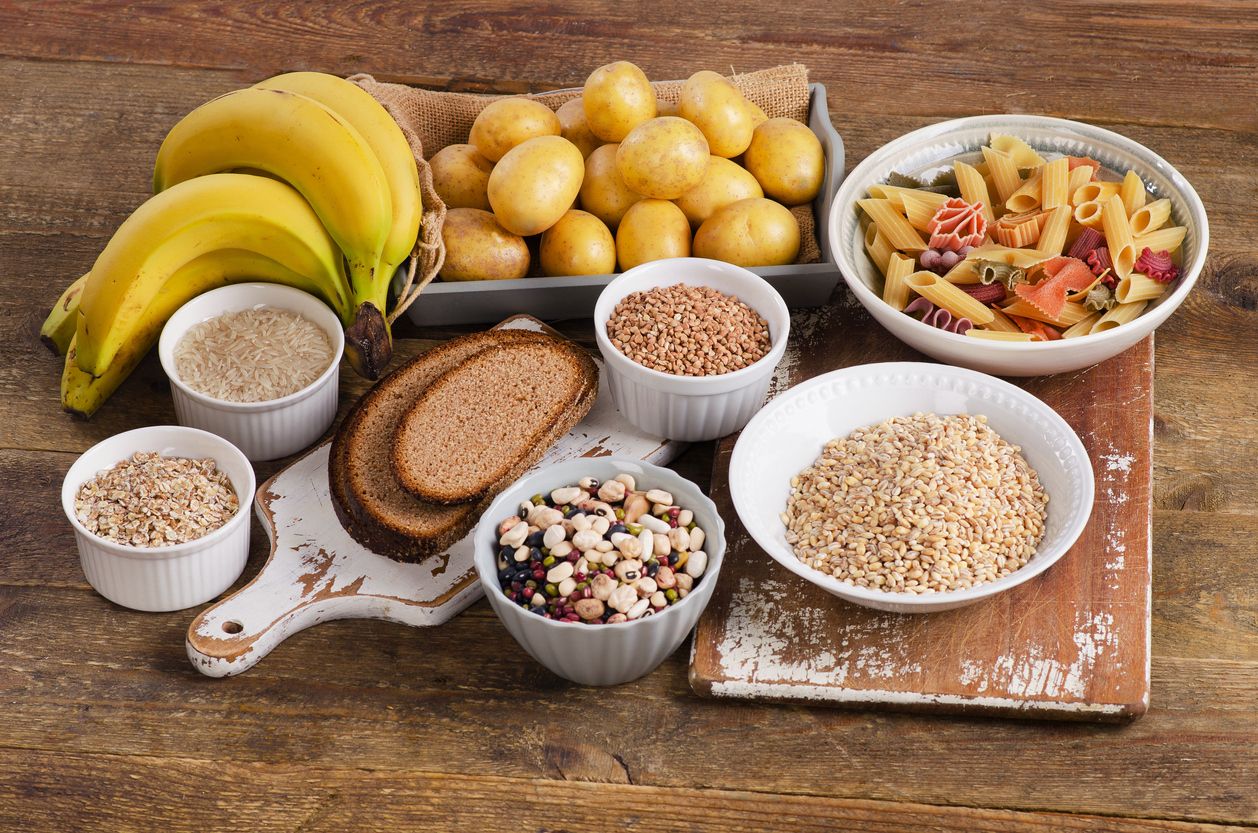
Why low-carb?
Following a low-carb lifestyle can have a number of benefits. These include sustainable weight loss, lower blood glucose levels and improved insulin sensitivity, which may then reduce one's dependency on related medications. It has also been found to lower triglycerides (fat molecules in the blood), increase HDL (the so-called 'good' cholesterol) and improve energy and brain functioning. Though, you may be wondering how low-carb helps achieve these outcomes.
Normally, when we consume carbohydrates, these are broken down into sugars (glucose) by our digestive system and absorbed into the blood. Once in the blood, these glucose molecules are transported to cells all over the body, where they fuel chemical reactions that keep us alive. In order for these glucose molecules to enter our cells, they need the help of a hormone called insulin, which is released from the pancreas. Hence, when we eat carbohydrates, we see a big spike in our blood glucose levels, as well as spike in the amount of insulin we produce, so that this glucose can move into our cells for further use. In comparison, when we eat protein and fat, we don't see this significant increase in blood sugars or insulin.
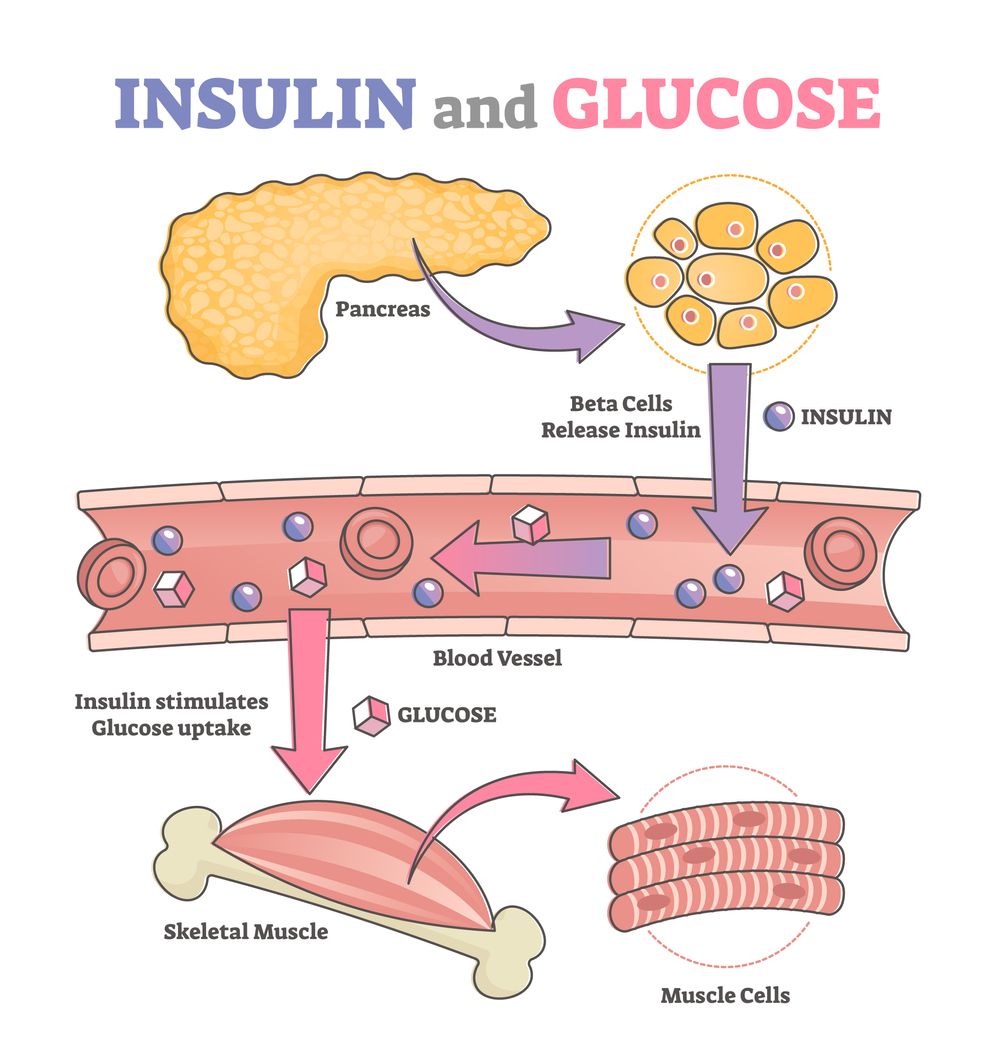
However, if we have prediabetes or type 2 diabetes, this means that our bodies struggle to move glucose from the blood into our cells and this can be for two key reasons. The first is that our pancreas may not be making enough insulin and the second is that our cells may have become resistant to the effects of insulin, also termed insulin resistance. Hence, the amount of glucose and insulin in the blood become elevated and this can trigger a number of physiological changes that can negatively impact our long-term health. For instance, high insulin levels can cause this excess glucose to be stored as fat and overtime this fat may start to be deposited in and around critical organs such as the pancreas and the liver, impairing their function.
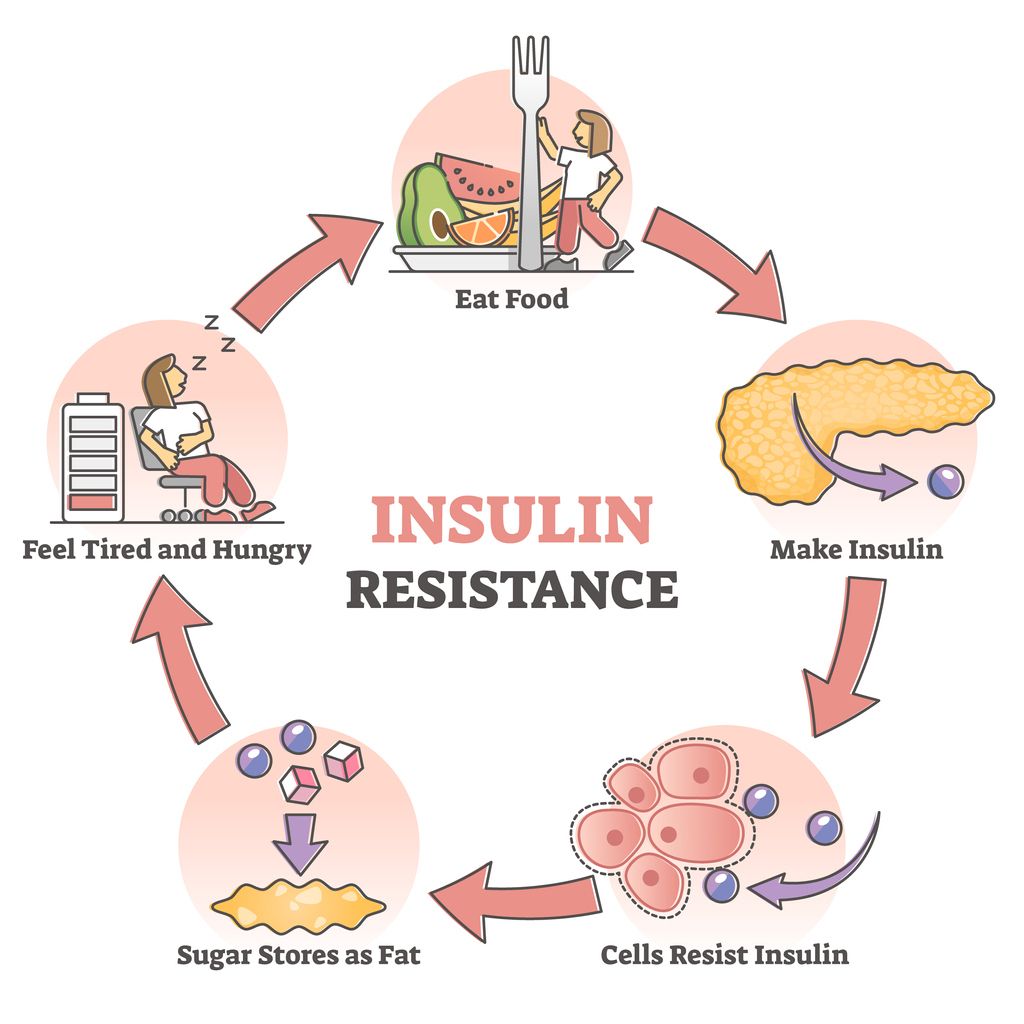
So, the first step in managing these conditions is often to try and reduce the amount of sugar in the blood and a key strategy for this can be to reduce our intake of sugary or higher carbohydrate foods. By doing this, we are reducing the subsequent spikes in blood glucose and decreasing the demand on the pancreas for more insulin, which can also mean less fat storage. Overtime, we may see our insulin levels decrease and our cells may actually regain sensitivity to the effects of insulin, enabling us to clear glucose from the blood more effectively. Helping control our blood glucose levels and weight are both important in the prevention and treatment of type 2 diabetes.
In addition, you may find that when following the low-carb approach you note less hunger and cravings. This may be explained by the fact that carbohydrates, especially those based on white flour and that are low in fibre, can cause big spikes, followed by big dips, in blood glucose, leading to increased hunger and sugar cravings. By focusing on high fibre carbohydrates and limiting our portions of these foods, we can reduce the incidence of this and maintain more stable glucose levels. The intake of sufficient protein, healthy fats and fibre-full vegetables is also able to mitigate these big spikes and dips, helping us to feel fuller for longer and possibly eating less.
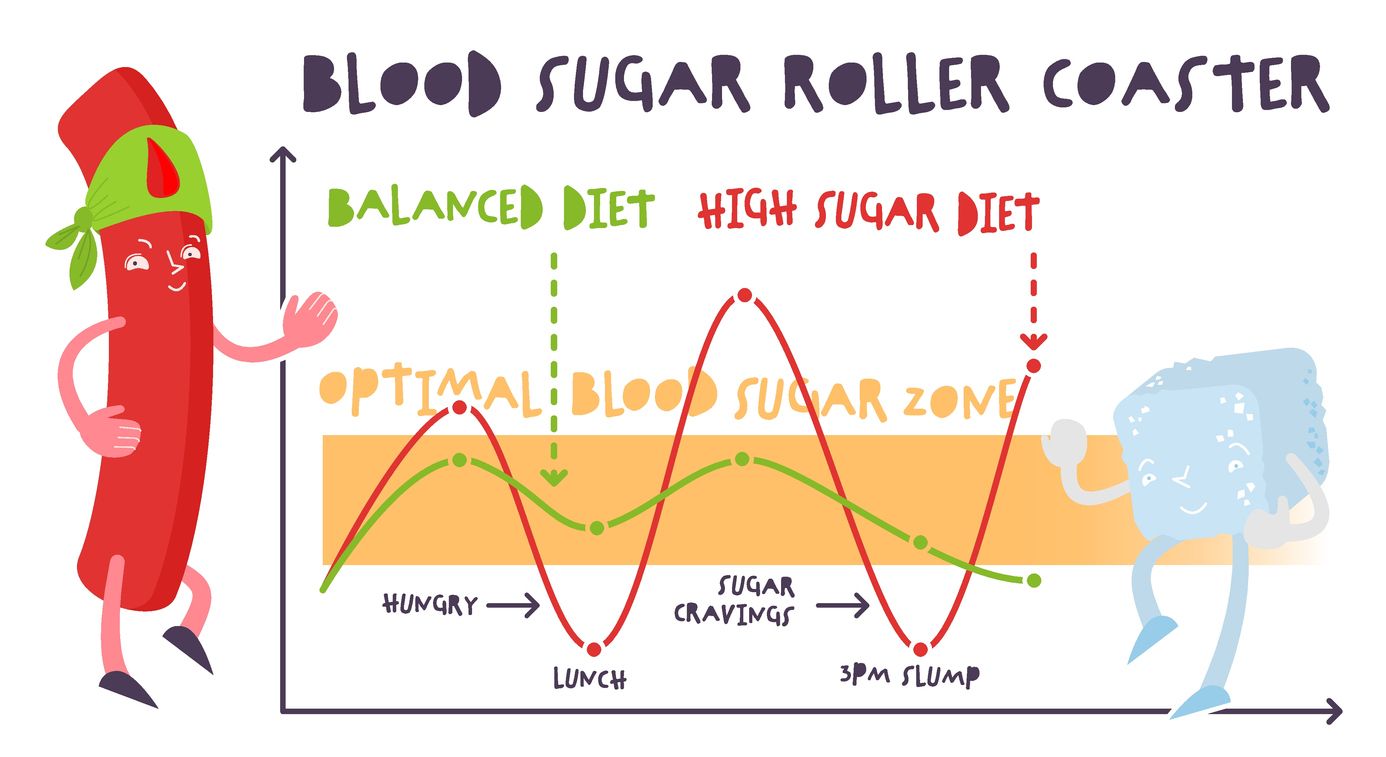
Getting started
If you are keen to start low-carb, then a helpful tip can be to try and keep your higher carbohydrate foods to around 1/4 of your plate, or roughly a cupped-hand quantity per meal. This includes the more obvious sources of carbohydrates such as pasta, bread, potatoes and rice, but can also refer to starchier fruits such as bananas and mango.
Another useful step can be, when you do eat higher carbohydrate foods, to opt for those that are also higher in fibre, such as wholewheat pasta, brown rice, oats and sweet potato. This is because fibre can help us to feel fuller for longer, alongside offering many benefits to our overall health and wellbeing.
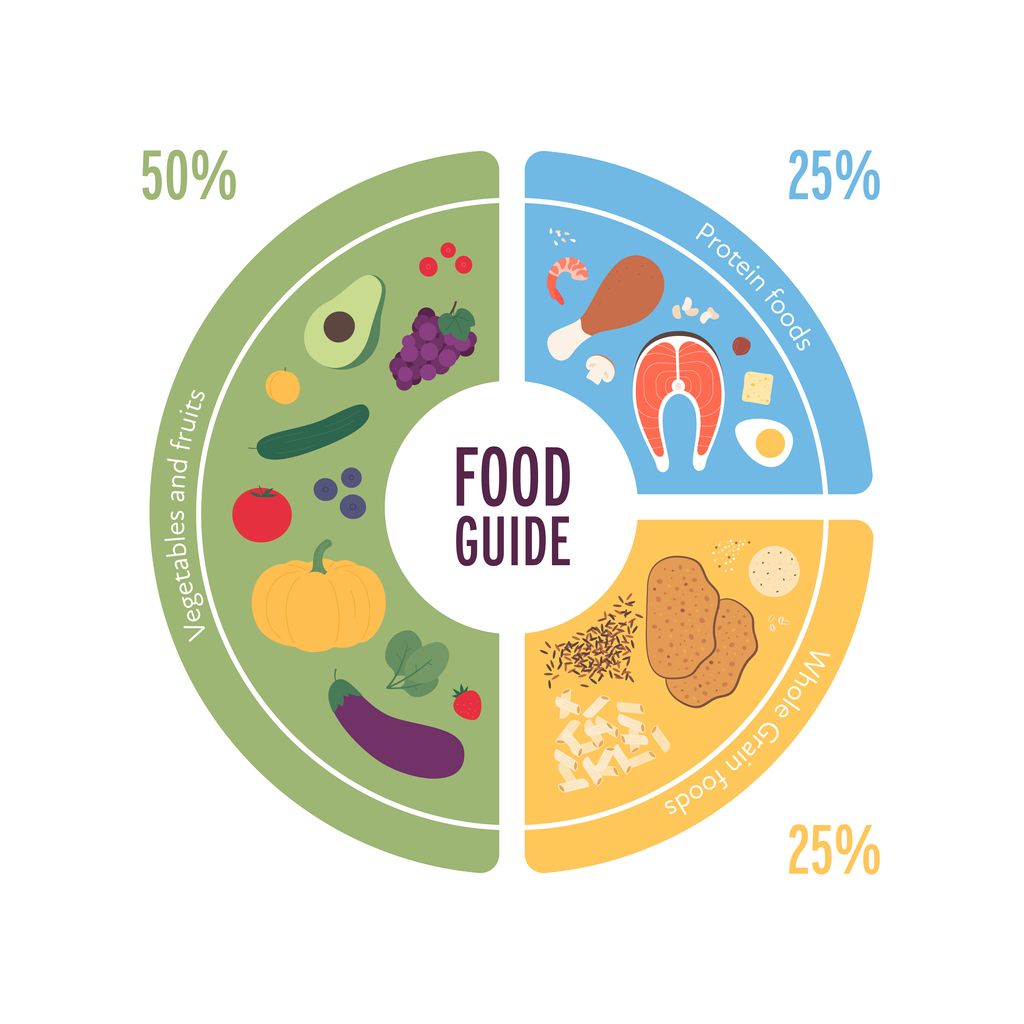
Some good low-carb swaps in place of higher carbohydrate foods can also be things like:
- Rice to cauliflower rice
- Spaghetti to courgetti (spiralised courgette)
- Mashed potato to mashed cauliflower
- Potato chips to celeriac chips
- Roasted potatoes to roast carrots
- Tortilla wraps to lettuce wraps
- Potato crisps for kale crisps
It is also important to ensure good intakes of protein and fat, with plenty of vegetables for your vitamins and minerals!
Take-away message
- A low-carb approach is defined as a diet comprising less than 130g of carbohydrates per day. This is low-carb, not no-carb, making it easier to sustain a healthy lifestyle.
- Helpful tips to reduce your carbohydrate intake include keeping higher-carb foods such as bread, rice, pasta and potatoes to 1/4 of your plate, or roughly a cupped-hand-sized amount.
- Swapping from refined carbohydrates, based on white flour, to wholegrain alternatives can help to improve our health. These may include brown rice, wholewheat pasta, wholemeal bread, wholemeal flour, sweet potatoes and quinoa.
- By lowering our carb intake we can reduce our blood glucose levels and insulin levels, meaning less hunger and less fat storage. This approach also focuses on healthy intakes of protein, fat and fibre, which are all very filling and so we may eat less.
- Before changing your diet, it is always recommended that you consult with your regular healthcare provider first. This may especially be the case if you on medication such as insulin, or are considering a very low-carb or keto diet, as these must be properly balanced to avoid nutrient deficiency.
If you would like support in beginning your low-carb journey then be sure to click below!

